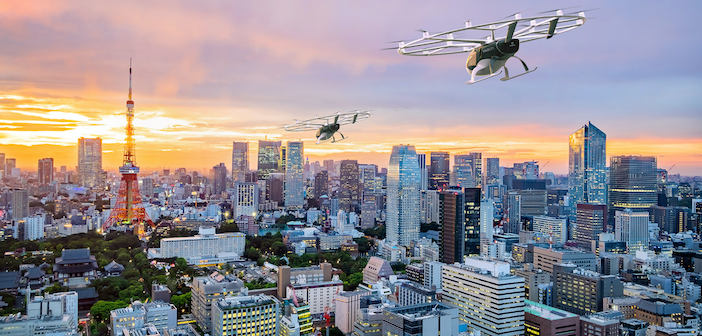Speaking about drones in Japan, it seems that the country is one of the most relaxed nations when it comes to drone use. It’s no surprise considering how much technology Japan has incorporated into their daily lives. As a result, there are very few restrictions on drone usage in Japanese residential areas. This makes it a great place to purchase your first drone as well as operate one safely outside of city limits. Therefore, if you’re looking to invest in a drone and take advantage of its potential benefits, then keep reading this article to learn more about this topic in detail.

What are the Drone Regulations in Japan?
There are several regulations you should be aware of. It’s important to note that even though you can fly a drone in residential areas, it still can’t fly over any public buildings such as schools or hospitals. Many commercial areas are also off limits, such as golf courses, airports and other sensitive locations like parks and forests. In addition, it’s important to note that flying a drone too high can also be illegal.
This is because the law requires that a drone stay under 120m (395ft) above the ground. Some cities and prefectures have also implemented their own drone regulations. In Tokyo, for example, it’s illegal to fly a drone in the city’s parks and forests, and some public buildings like schools and hospitals are also off limits.
Where is it Allowed to Fly in Japan?
As mentioned above, in most cases, it’s legal to fly a drone in residential and commercial areas. You can also fly drones in parks and forests as long as you don’t fly over 120m (395ft). In addition, if you’re flying a model that weighs less than 25kg (55lb), then it’s allowed to fly over national parks and marine conservation areas.
In which areas can you NOT fly a drone?
It’s important to remember that the recreational use of drones is still very new, and so regulations are still being put in place. It’s likely that regulations will become more stringent as time goes on, so it’s important to be aware of these regulations now so you don’t find yourself breaking the law later. It’s important to keep in mind that flying a drone is only legal in certain areas.
For example, it’s illegal to fly a drone in a commercial airport or restricted airspace. It’s also important to note that some areas are highly restricted. For example, it’s illegal to fly a drone near a nuclear facility, over a reservoir, or over a forest that’s owned by a third party.
Is it Legal to Buy a Drone in Japan?
As mentioned above, in most cases, it’s legal to fly a drone in residential and commercial areas. You can also fly drones in parks and forests as long as you don’t fly over 120m (395ft). In addition, if you’re flying a model that weighs less than 25kg (55lb), then it’s allowed to fly over national parks and marine conservation areas. Unfortunately, recreational drone use is still very new in Japan, and regulations are still being put in place. In fact, it’s only legal to buy drones that weigh less than 27kg (60lb). While it is legal to buy a drone, it will only be permitted to be flown with a special remote control.

Registration of Drones in Japan
The first and most important thing to know about using a drone in Japan is that it is not allowed in all residential areas. A significant number of residential areas in Japan do not allow the use of drones at all. The only residential areas where you may use a drone are those where the government has authorized the use of drones for commercial, research, or other non-recreational purposes. Registration is required for any and all drones that are used in Japan.
The registration process is quite simple and does not require any special effort or expertise. However, this does not mean that registration is a mandatory requirement for using a drone in residential areas. Many areas have enacted regulations that dictate when registration is required and when it is not.
Minimum Distance Between Drones and Homes
The maximum altitude at which a drone is allowed to fly in Japan is 150 meters (492 feet). When operating a drone in residential areas, you must keep the drone at least 30 meters (98 feet) away from any person or object. In addition, you must keep the drone at least 150 meters (492 feet) away from the nearest structure, building, or forest.
Prohibited Flight Activities
Drones may not be used for any of the following purposes in residential areas:
- Aerial photography or cinematography
- Aerial monitoring
- Aerial inspection of public facilities
- Aerial inspection of crops or property
- Aerial inspection of animals or livestock
- Aerial inspection of any person
- Aerial inspection of any property
This list is not exhaustive and the above prohibited activities are not limited to these. The above list simply explains the main types of prohibited activities that are relevant to residential areas. For each of these activities, there are certain penalties that may be imposed if a drone is used in a prohibited manner.
Penalties for Violating Regulations
There are different penalties that may be imposed for violating these regulations. If you are found to have been using a drone in a prohibited manner, you may be subject to one or more of the following penalties: – A fine of up to ¥500,000 (US$5,839) – A prison sentence of up to 2 years – A fine of up to ¥500,000 (US$5,839) – A prison sentence of up to 2 years
Conclusion
In order to avoid potential fines, penalties, or both, it is important to follow the rules and regulations governing the use of drones in residential areas. This means that you may not use a drone in any way that is prohibited. It also means that you must keep the drone at least 30 meters (98 feet) away from any person, building, or tree. If you are unsure about whether or not a specific area allows the use of drones, it is best to avoid using one there. If you must use a drone, be sure to keep the aircraft at least 30 meters (98 feet) away from any person, building, or tree.










